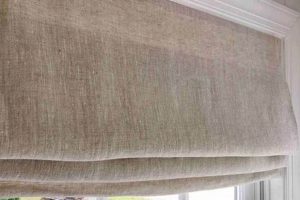The practice of constructing electronic sound-generating equipment from individual components or kits, rather than purchasing pre-assembled commercial instruments, defines a specific approach to music technology. This method typically involves soldering, circuit design, and an understanding of electronics to create unique synthesizers, effects units, and other audio devices. For example, a project may involve assembling a voltage-controlled oscillator (VCO) using discrete transistors and operational amplifiers, or building a filter circuit based on a classic synthesizer design.
This hands-on engagement offers multiple advantages. The builder gains in-depth knowledge of electronic circuitry and synthesis techniques. It also frequently represents a cost-effective alternative to acquiring expensive commercially available equipment. Further, the ability to customize and modify existing designs, or even create entirely new instruments, fosters experimentation and sonic innovation. Historically, this approach has been central to the development of electronic music, empowering individuals to explore sonic territories beyond the limitations of mass-produced instruments. It has shaped the landscape of electronic music.
The following sections will delve into various aspects of this activity, including essential tools and equipment, foundational electronic concepts, available resources for learning and project development, and an overview of popular project types and design considerations. An examination of open-source hardware and software relevant to this field will also be provided.
Guidance for Electronic Instrument Construction
The following guidelines are designed to aid individuals in the construction of electronic sound-generating equipment. Strict adherence to safety protocols and a systematic approach are critical for success.
Tip 1: Comprehensive Planning is Essential. Prior to commencing any build, thoroughly review the schematic, parts list, and construction documentation. Verify component values and availability. Incorrect components can lead to circuit malfunction or damage.
Tip 2: Prioritize a Clean and Organized Workspace. A well-organized workspace minimizes errors and facilitates efficient assembly. Implement a system for labeling and storing components. Adequate lighting is critical for precision soldering.
Tip 3: Master Soldering Techniques. Proficiency in soldering is fundamental to successful construction. Practice soldering on scrap components before working on the actual circuit. Use appropriate soldering temperatures and flux to ensure reliable connections.
Tip 4: Implement a Systematic Testing Procedure. Following each stage of construction, meticulously test the circuit. Use a multimeter and oscilloscope to verify voltages, waveforms, and signal integrity. Isolate and address any anomalies promptly.
Tip 5: Grounding is Paramount. Proper grounding is crucial for minimizing noise and ensuring stable operation. Implement a robust grounding scheme, connecting all ground points to a common ground plane. Confirm continuity between ground points.
Tip 6: Component Orientation Matters. Pay careful attention to component orientation, particularly for polarized components such as diodes, capacitors, and integrated circuits. Incorrect orientation can result in circuit damage or failure.
Tip 7: Document Every Step. Maintain a detailed record of the construction process, including photographs and notes. This documentation will prove invaluable for troubleshooting and future modifications. Record all modifications made.
The adherence to these principles increases the likelihood of project success and enables the builder to gain a deeper understanding of electronic instrument design and function.
The subsequent sections will explore specific circuit designs and advanced construction techniques, building upon these fundamental concepts.
1. Circuit Design
Circuit design stands as the foundational element of electronic instrument construction. The arrangement and configuration of electronic components directly dictates the instrument’s functionality, sonic characteristics, and overall performance.
- Oscillator Topologies
Oscillator circuits form the basis of many synthesizers, generating the initial audio signal. Different topologies, such as relaxation oscillators, voltage-controlled oscillators (VCOs) utilizing operational amplifiers, or digital oscillators implemented with microcontrollers, offer varying degrees of stability, waveform complexity, and control options. For instance, a sawtooth wave oscillator may employ a capacitor charging/discharging circuit, while a more complex digital oscillator can generate a wide range of waveforms and implement sophisticated modulation schemes.
- Filter Networks
Filters shape the frequency content of an audio signal, altering its timbre and character. Active filters, incorporating operational amplifiers, allow for greater control over filter response and resonance. Passive filters, composed solely of resistors, capacitors, and inductors, offer a simpler alternative, often used in vintage synthesizer designs. The choice of filter topology, such as low-pass, high-pass, band-pass, or notch, significantly impacts the sonic possibilities of the instrument. A classic example is the Moog ladder filter, renowned for its resonant, self-oscillating behavior.
- Amplification and Gain Control
Amplification circuits boost the signal level, ensuring adequate output volume. Voltage-controlled amplifiers (VCAs) allow for dynamic control over gain, enabling expressive modulation of the signal’s amplitude. Op-amps are commonly employed for amplification due to their high gain and versatility. Proper design of amplification stages is crucial to minimize noise and distortion, preserving the integrity of the audio signal. The attack, decay, sustain, and release (ADSR) envelope generator often modulates the VCA, shaping the dynamics of the sound.
- Modulation Sources
Modulation introduces dynamic changes to circuit parameters, adding movement and complexity to the sound. Low-frequency oscillators (LFOs) provide periodic modulation, while envelope generators create transient changes in response to triggers. Noise generators introduce randomness, while sequencers generate rhythmic patterns. These modulation sources can be applied to various circuit parameters, such as oscillator frequency, filter cutoff, or amplifier gain, to create a wide range of effects. For example, an LFO modulating the pitch of an oscillator creates a vibrato effect.
These core aspects of circuit design directly enable the creation of custom instruments. Careful consideration of oscillator topology, filter characteristics, amplification stages, and modulation sources allows the builder to craft instruments with unique sonic signatures, pushing the boundaries of electronic sound creation.
2. Component Selection
The selection of electronic components exerts a profound influence on the performance, stability, and sonic characteristics of electronic instruments built by hobbyists and professionals alike. Choosing the correct parts is not merely a technical necessity but a pivotal element in shaping the final product’s behavior and sound.
- Active Component Specifications
Operational amplifiers (op-amps), transistors, and integrated circuits (ICs) form the active building blocks of electronic circuits. Their specifications, including gain-bandwidth product, slew rate, noise figure, and input bias current, directly affect the circuit’s frequency response, distortion characteristics, and overall signal quality. For example, selecting a low-noise op-amp for a preamplifier stage minimizes unwanted noise in the output signal. Using transistors with higher current capabilities will give circuits headroom. Furthermore, the operating voltage range of ICs must be respected to avoid damage.
- Passive Component Precision and Tolerance
Resistors, capacitors, and inductors define the frequency response, impedance, and signal attenuation within a circuit. The tolerance of these components, expressed as a percentage, indicates the allowable deviation from their stated value. Precision resistors with low tolerance (e.g., 1% or 0.1%) are crucial in critical circuits such as filters and oscillators, where accurate component values are essential for achieving the desired performance. Similarly, capacitor types (e.g., ceramic, electrolytic, film) impact frequency response and stability, especially in audio applications. Understanding the material properties, such as temperature coefficients and voltage ratings, will optimize selection criteria.
- Connector Quality and Reliability
Connectors serve as the interface between different circuit sections and external devices. The quality of connectors affects signal integrity, contact resistance, and overall reliability. Gold-plated connectors offer superior corrosion resistance and lower contact resistance compared to tin-plated connectors, improving signal transfer and reducing signal loss. Robust connectors with secure locking mechanisms are essential for preventing accidental disconnections. Shielded connectors and cables minimize electromagnetic interference and noise, preserving signal clarity. These improvements help to ensure safe and reliable operation.
- Power Supply Characteristics
The power supply provides the electrical energy required for circuit operation. Its characteristics, including voltage regulation, ripple noise, and current capacity, significantly impact circuit stability and performance. A well-regulated power supply maintains a constant output voltage despite variations in load current or input voltage, preventing voltage fluctuations that can introduce noise and distortion. Low ripple noise minimizes unwanted hum and interference in the audio signal. Adequate current capacity ensures that the power supply can deliver sufficient power to all circuit components without overheating or voltage sag. Selecting a suitable transformer to generate proper voltages helps ensure a well regulated and robust power supply.
The careful consideration of these facets when selecting components is paramount in the pursuit of constructing reliable, high-performing electronic instruments. Component selection, therefore, is an indispensable element in the creation of customized and sonically distinct electronic music tools.
3. Soldering Technique
Within the realm of electronic instrument construction, soldering technique represents a critical skill directly influencing the functionality and longevity of the finished device. A poorly executed solder joint introduces a potential point of failure, leading to intermittent signal loss, increased noise, or complete circuit malfunction. The connection between component leads and circuit board traces forms the electrical and mechanical backbone of any electronic assembly. Insufficient heat application results in “cold joints,” characterized by a grainy appearance and weak electrical contact. Conversely, excessive heat exposure can damage components or lift circuit board traces, rendering the assembly inoperable.
Consider the construction of a voltage-controlled oscillator (VCO), a fundamental building block in many synthesizers. Accurate and stable frequency control relies upon precise component values within timing circuits. A cold solder joint on a resistor in this circuit introduces variable resistance, causing frequency drift and instability. Similarly, in filter circuits, poor solder joints on capacitors affect frequency response and filter characteristics, compromising the intended sonic character of the instrument. In each instance, improper soldering becomes a direct impediment to the intended functionality of the custom instrument.
Mastering soldering technique, therefore, is not merely a procedural step but an essential investment in the reliability and performance of instruments. Proper technique encompasses the use of appropriate soldering equipment, including temperature-controlled soldering irons and quality solder. It also includes an understanding of flux types and their application, as well as the recognition of a properly formed solder joint. Adherence to best practices reduces the risk of failure and ensures instruments perform as designed. This, in turn, fosters a more rewarding and productive building experience.
4. Power Supply
A stable and reliable power supply serves as the bedrock for any electronic instrument. It dictates the consistent operation and sonic integrity of custom-built synthesizers. Insufficient or improperly regulated power jeopardizes circuit stability, introduces unwanted noise, and potentially damages sensitive components. Effective power supply design and implementation are therefore paramount for successful outcomes in DIY synth projects.
- Voltage Regulation
Precise voltage regulation is essential for maintaining stable oscillator frequencies, filter characteristics, and amplifier gain. Fluctuations in supply voltage directly translate to sonic inconsistencies and erratic behavior. Linear regulators, such as the LM7805 and LM7905 series, provide simple and effective voltage regulation for fixed-voltage applications. Switching regulators offer higher efficiency, particularly in applications requiring multiple voltage rails or higher current demands. The choice depends on the specific voltage and current requirements of the synth modules and the tolerance for switching noise. Circuits with microcontrollers often benefit from precise voltage regulation.
- Current Capacity
Adequate current capacity is critical to avoid voltage sag and ensure reliable operation under varying load conditions. Synth modules often exhibit dynamic current draw, particularly during modulation or filter sweeps. The power supply must be capable of delivering sufficient current to meet the peak demands of all modules without significant voltage drop. Overloading a power supply leads to instability, distortion, and potential damage. Careful analysis of the current requirements of each module, with a safety margin, is necessary for proper power supply selection.
- Noise and Ripple Filtering
Power supply noise and ripple introduce unwanted artifacts into the audio signal. Linear power supplies, while less efficient, generally exhibit lower noise compared to switching power supplies. Effective filtering techniques, such as the use of electrolytic capacitors and ferrite beads, are essential for attenuating high-frequency noise and ripple. Proper grounding and shielding minimize the coupling of noise from the power supply to sensitive audio circuits. Careful layout considerations, such as separating analog and digital ground planes, further reduce noise contamination.
- Overcurrent and Overvoltage Protection
Robust protection mechanisms safeguard against accidental overloads and voltage surges, preventing damage to synth modules and the power supply itself. Fuses provide simple overcurrent protection, interrupting the circuit when current exceeds a predetermined threshold. Overvoltage protection circuits, such as crowbar circuits and transient voltage suppressors (TVS diodes), clamp the output voltage to a safe level, protecting sensitive components from voltage spikes. Implementing these protection measures enhances the reliability and longevity of the synth.
These aspects of power supply design are critical for maintaining a stable and sonically clean instrument. Proper attention to voltage regulation, current capacity, noise filtering, and protection mechanisms ensures that the DIY synthesizer operates reliably and performs as intended, providing a robust foundation for creative sound exploration. Without adequate attention to these parameters, performance will be severely compromised.
5. Signal Path
The signal path constitutes a fundamental element within electronic musical instrument design. Within the context of custom-built synthesizers, meticulous attention to signal flow becomes paramount. The sequential arrangement and characteristics of electronic components through which an audio signal propagates profoundly shape the instrument’s sonic output.
- Oscillator Output and Shaping
The initial stage of the signal path typically involves the oscillator. The oscillator generates the raw audio waveform. The choice of oscillator topology, waveform selection, and initial wave shaping circuits directly impact the timbre and harmonic content of the sound. Examples include sawtooth waves, square waves, and sine waves, each possessing distinct harmonic profiles. Altering the duty cycle of a square wave, for instance, introduces changes in the harmonic series, yielding variations in tonal color. The selection of components impacts this and should be considered.
- Filter Design and Frequency Manipulation
Subsequent to the oscillator, the signal path often incorporates a filter circuit. The filter selectively attenuates or amplifies specific frequency ranges, sculpturing the signal’s spectral content. Low-pass filters attenuate high frequencies, creating a warmer, more subdued tone. High-pass filters attenuate low frequencies, resulting in a brighter, clearer sound. Band-pass filters isolate a specific frequency range, emphasizing certain harmonics. The filter cutoff frequency and resonance parameters directly control the timbre of the instrument. Component selection and circuit design play a crucial role in achieving desired filter characteristics.
- Amplification and Gain Staging
The amplification stage boosts the signal to a suitable output level, ensuring sufficient volume. Gain staging, the process of carefully controlling signal levels throughout the signal path, prevents clipping and distortion while maximizing signal-to-noise ratio. Voltage-controlled amplifiers (VCAs) allow for dynamic control over the signal’s amplitude, enabling expressive modulation and automation. The implementation of VCAs significantly impacts the dynamic range and responsiveness of the instrument.
- Effects Processing and Output Conditioning
The final stage of the signal path may incorporate effects processing, such as reverb, delay, or distortion, to further shape the signal’s character. Output conditioning circuits, including impedance matching and buffering stages, optimize the signal for connection to external devices, such as amplifiers, recording equipment, and mixing consoles. Proper impedance matching minimizes signal loss and distortion, preserving the sonic integrity of the instrument. The arrangement and quality of these final components are extremely important.
The interplay of these facets within the signal path dictates the unique sonic footprint. Through careful design and component selection, builders can craft instruments with distinct timbral characteristics, expressive capabilities, and tonal versatility. The signal path, therefore, is a cornerstone. This also includes the layout and assembly.
6. Enclosure Build
Enclosure construction represents a critical phase in the creation of electronic instruments. It directly affects the instrument’s physical durability, usability, and protection of internal components. A well-designed enclosure shields sensitive electronics from environmental factors, such as dust, moisture, and electromagnetic interference, thereby enhancing its long-term reliability. Proper layout within the enclosure facilitates intuitive operation and ergonomic access to controls. The enclosure also acts as a grounding plane, minimizing noise and ensuring electrical safety. Failing to account for these considerations can significantly degrade the instrument’s performance and longevity. A poorly constructed enclosure can expose delicate components to damage, resulting in circuit failure. Furthermore, a poorly designed layout impedes user interaction and diminishes the overall playing experience.
The selection of materials and construction techniques are important. Metal enclosures offer superior shielding and physical protection compared to plastic enclosures. However, they also require specialized tools and skills for fabrication. Wood enclosures provide a warmer aesthetic and are easier to work with, but offer less shielding and may be susceptible to warping or damage from moisture. The choice depends on the intended environment and the builder’s skills and resources. Consider the practical application of the instrument when designing and constructing the enclosure. A portable synthesizer requires a lightweight and robust enclosure, while a studio instrument can benefit from a larger, more elaborate design with integrated patch bays and power distribution.
In summary, enclosure build is not merely an aesthetic consideration; it is an integral aspect of electronic instrument design. By carefully selecting materials, planning the layout, and implementing sound construction techniques, the instrument’s functionality, durability, and overall user experience is augmented. Addressing these aspects enables the construction of robust, reliable, and enjoyable electronic instruments. Disregard results in compromise and shortens lifespan.
Frequently Asked Questions
The following section addresses common inquiries concerning the construction and utilization of custom-built electronic musical instruments. These responses aim to provide clear and concise information, facilitating a deeper understanding of the subject.
Question 1: What is the minimum level of electronic knowledge required
to begin building instruments?
A foundational understanding of basic electronic components (resistors, capacitors, transistors), circuit schematics, and soldering techniques is highly recommended. While kits can provide a starting point, troubleshooting and modification necessitate a working knowledge of these fundamentals.
Question 2: Are custom-built synthesizers more cost-effective than commercially available instruments?
While some projects may be more economical, the primary benefit often lies in the acquisition of knowledge and the ability to customize and create unique instruments. The cost of components, tools, and potential troubleshooting can, in certain instances, exceed the price of pre-built alternatives.
Question 3: What are the essential tools required for construction?
A temperature-controlled soldering iron, multimeter, wire cutters, wire strippers, and a breadboard are considered essential starting points. As projects become more complex, an oscilloscope, signal generator, and logic analyzer may be necessary for debugging and analysis.
Question 4: What are the primary safety considerations when working with electronics?
Always disconnect power before working on any circuit. Wear appropriate eye protection to prevent solder splashes or component fragments from causing injury. Ensure proper ventilation to avoid inhaling solder fumes. Be mindful of potentially hazardous voltages present in power supplies and high-voltage circuits.
Question 5: How does one troubleshoot a malfunctioning circuit?
Systematic troubleshooting involves verifying power supply voltages, checking component values, examining solder joints, and tracing the signal path with an oscilloscope. Consulting schematics and seeking assistance from online communities can also aid in identifying and resolving issues.
Question 6: What are the ethical considerations surrounding the replication of existing synthesizer designs?
While replicating circuits for personal use is generally acceptable, commercial reproduction of copyrighted designs without permission is unethical and potentially illegal. Respecting intellectual property rights and giving credit to original designers is crucial.
In conclusion, the practice necessitates a blend of technical knowledge, practical skills, and ethical awareness. By addressing these frequently asked questions, a clearer understanding of the process and its potential challenges is gained.
The subsequent section will delve into specific project examples, showcasing the diverse range of possibilities.
Conclusion
The preceding exploration has delineated essential facets of “diy synth,” emphasizing circuit design, component selection, soldering technique, power supply considerations, signal path management, and enclosure construction. Emphasis was placed on the understanding that the practice of creating electronic sound instruments necessitates a blend of theoretical comprehension and practical implementation. The construction process requires planning, precision, and adherence to safety protocols.
The pursuit of “diy synth” empowers individuals to transcend the limitations of commercial offerings and foster a deeper understanding of sound synthesis. It invites exploration, innovation, and the creation of unique sonic landscapes. Continued engagement and collaboration within the electronic music community remain critical to its ongoing evolution.







